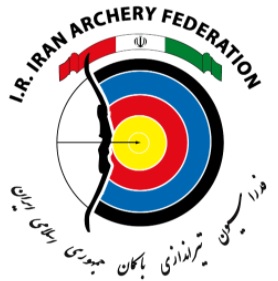Persian Archery
Persian Archery & The Persian Bow
The main component of the Persian military was the archer. Persian archery was taught to the youth at a very young age, usually around 5 years old. Before the great empires of Persia would emerge, most people living on the Iranian plateau lived as nomadic pastoralists. They were tribes of animal herders and hunter-gatherers. The composite recurve bow was known and used as part of their daily lives. The Greek historian Herodotus writes of the ancient Persians: “from the age of five years to twenty, they instruct their sons in three things only: to ride, to use the bow and to speak the truth.”

The mighty Persian Empires played a central role in the history of the ancient world. Because of the Western world’s Greco-Roman heritage, the Persians are typically depicted as the brutal and oppressive empire which sought to enslave and amalgamate the entirety of the then known world. However, when looking further into ancient Persian history, it can be noted that the assimilated peoples and regions were treated relatively fairly. Local laws, customs, and religions were allowed to remain as they had been. The Persian Kings likely saw tolerance as a political strategy that gave their conquered subjects fewer reasons to rebel.
This article explores Persian archery, Persian history, as well as military tactics and strategies employed by Persian armies, which led to many successful conquests.

Achaemenid Persian Archery
The Persian Achaemenid dynasty, founded by Cyrus the Great in 550 B.C. was the first official dynasty of the Persian empires. Cyrus managed to subdue and conquer most of the neighboring kingdoms and city-states in the middle east. The western reaches of the empire encompassed the Levant as well as several Greek islands in the Mediterranean. The Persians were rulers of most of the known world at this time. The success of the Achaemenid military was due largely to the tactics employed which involved Persian archery.
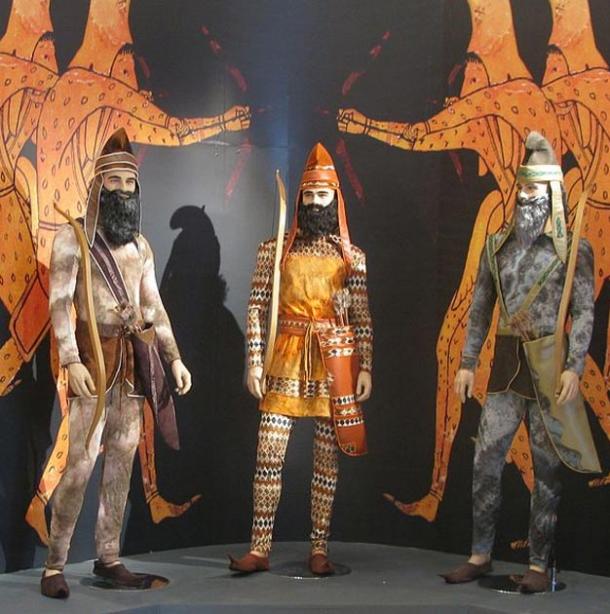
The Achaemenids deployed a standing national army of professional soldiers. The strength of this army is estimated by most scholars to be over 120,000 men.
The typical tactic of the Persians in the early Achaemenid period was an evolution of the Assyrian tactic used before. The Assyrians would deploy a row of shield bearers and a row of archers behind them. The Persians had one row of shield-bearers known as “sparabara” with nine rows of archers behind them. A unit of 10,000 Persian warriors arranged in this manner could fire 100,000 arrows in a minute and keep up this rate of fire for several minutes. As you may know from the movie “300”, the Persian archery would seem to “blot out the sun” with such high-intensity volleys.

Persian Archery & Battle Tactics
Persian mounted archers would commence the battle by riding towards the enemy. They would release arrows, and then ride away, turning gradually in a clockwise direction. While the enemies of the Persians would attempt to cluster together and interlock shields, the sparabara and archer units would form their lines. The dense formations their enemies were forced into to protect from mounted archers would be easy targets for arrow showers from the foot archers. The Persians had the system down pat. This method of warfare allowed them to defeat their opponents time and time again.
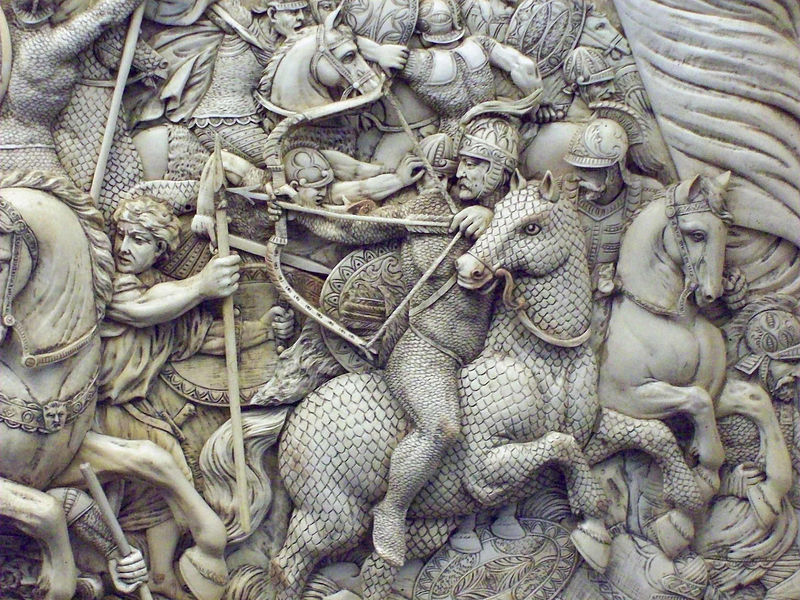
The Persians were not invincible, however. These tactics would not be able to be used to maximum effect if the battlefield was not wide open and flat. Indeed the Greeks knew of this, and on many occasions chose mountainous areas or marshes to engage the Persians. The Persian forces also would not be as effective if the enemy was also highly mobile (mounted). Combined-arms forces would also cause trouble for Persians, such as when Alexander the Great invaded.
Persian Immortals
The 10,000 elite heavy infantry of Cyrus the Great were called by the Greek historian Herodotus “The Immortals”. The Persians did not refer to this regiment as the Immortals. It is believed that Herodotus and/or his informants may have confused the Old Persian anûšiya- (“companion”, or “follower”) with anauša- (“immortal”).
In any event, this regiment would serve as the personal guard of the King at his palace and on campaign. Their ranks were constantly kept at 10,000 strong. If a soldier would be killed or wounded, another would take his place. Participating in several renowned campaigns in antiquity the Immortals were feared and respected throughout the known world. They fought at the Battle of Thermopylae 480 BC as well as the Persian conquest of Egypt in 525 BC.
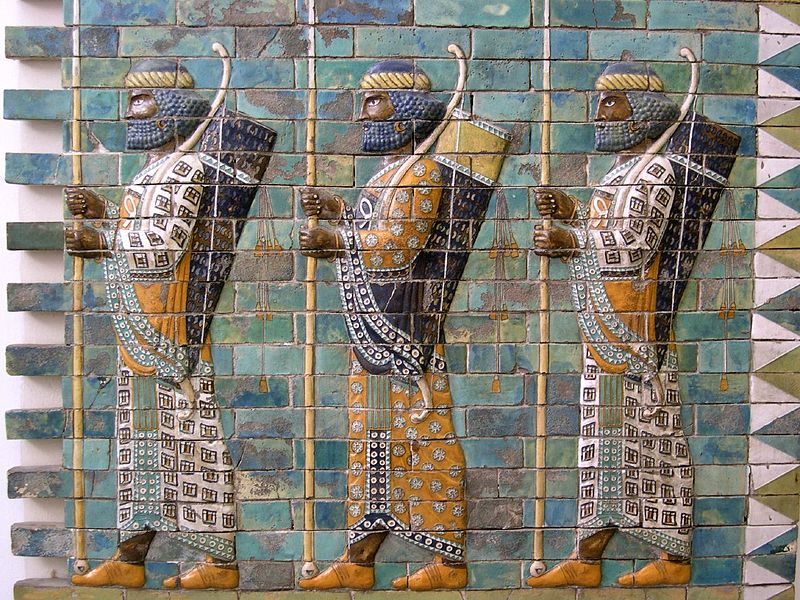
Such elite soldiers would surely have been masters of Persian archery. Herodotus tells us the details of their military attire and equipment. They are equipped with large bows and quivers, a short spear, wicker shields covered in leather as well as daggers and short swords. Depictions of Persian soldiers, possibly the elite 10,000 of Cyrus on the walls of palaces match the description given by Herodotus. Some particularly well-preserved wall carvings from the palace of Cyrus at Susa depict infantrymen of the Empire with their large Persian bows. They are clearly relatively large bows with lovely curves and pronounced recurved tips.
The Parthians
After the conquests of Alexander of Macedon and the fall of the Hellenistic Seleucid Empire, the Parthians took power in Persia. This empire inherited the previous Persian domains and lasted from 247 BC to 224 AD. The Parthians were not city dwellers but could trace their lineages back to the Scythians of the steppe to the northeast.
Persian archery tactics would change as the Parthians were primarily mounted archers. The Persian bow during the Achaemenid was a longer recurve similar to the angular bow used by the earlier Assyrians and Egyptians. The Parthians, with their nobility and elites being of Scythian stock, adopted this shorter, more curvy bow.
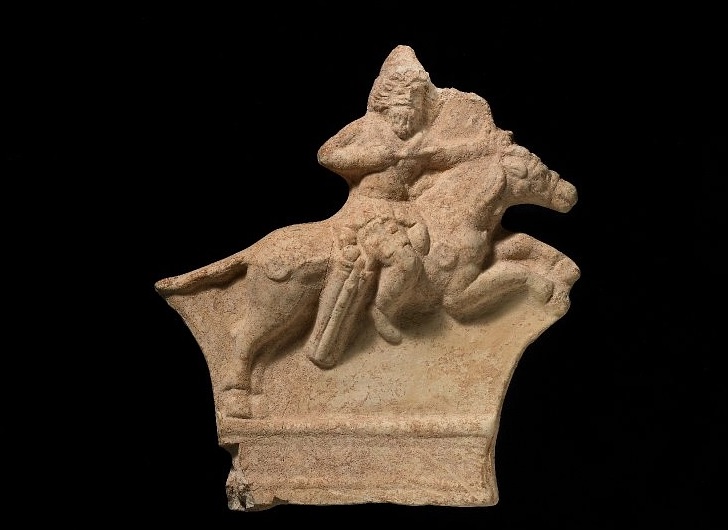
Parthian military tactics were a great nuisance to infantry based armies of the past such as the Romans. The Battle of Carrhae fought in 53 B.C. between the Romans and Parthians resulted in one of the most epic defeats for the Romans in history. The Parthians were masters of mounted archery and would employ the tactics of all mounted steppe armies. Creating chaos with their maneuvers, while constantly showering the enemy with arrows, the Parthians would wear down their adversaries. They would also set up ambushes and the infamous feigned retreat.
If you didn’t already know, this is where you entice the enemy to pursue you as you fake or “feign” a retreat. Once the enemy is sufficiently convinced and in hot pursuit, your mounted archers turn in the saddle to shoot backward at the pursuing enemy. The Parthians were so competent at this maneuver that shooting backward on a horse is still known today as “the Parthian shot”.
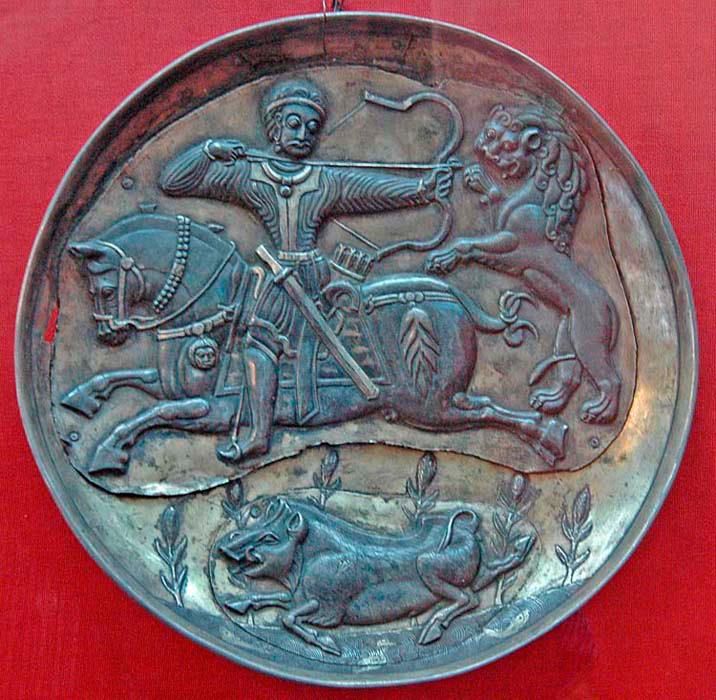
The Sassanids
The Sassanian Empire was the next establishment in Persia after the Parthians. It was the last imperial dynasty before the arrival of Islam. It is also called the Neo-Persian Empire by modern historians. Inheriting the domains of past Persian Empires, it held power for over four centuries (224 to 651 AD).
The Sassanids would continue to employ some of the Persian archery tactics of their predecessors. Along with mounted archers, the Sassanid cavalry also used Cataphracts. Heavily armed and armored units were used as shock troops to charge the enemy. War elephants were also used extensively as cavalry supporting units.
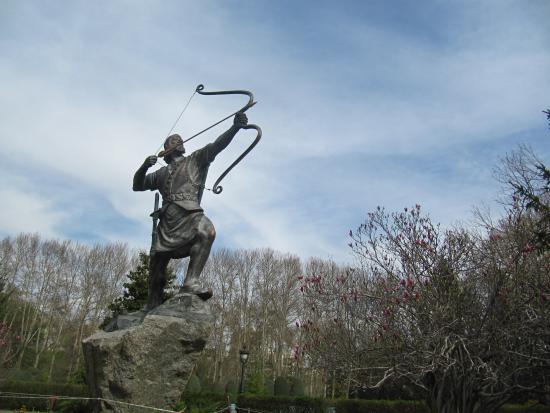
Arash the Archer
Arash the Archer is a figure from ancient Persian folklore. He is known as Arash the Archer because of the great distance he once shot an arrow. According to a version of the legend, there is a territorial conflict and war between the Iranians and Turanians. To settle the boundary dispute they agree that an arrow would be shot, and the landing-place of the arrow would determine the future boundary between the two nations. After some supernatural guidance, a special bow and arrow are constructed. Arash is asked to be the archer, and this was a good choice. The arrow apparently travels a great distance (accounts vary, but it was huge). This legend illustrates the reverence the Persians had for archers.
Ancient Persian Bow and Arrow
The ancient Persians, being themselves descendants of nomads would have been all too familiar with the composite recurves of the steppe. The Persian bow would have been constructed in the manner in which all composite recurves were made. A wooden core was layered between horn on the belly and sinew on the back of the bow. From the shape of the bow as depicted in Persian art, it was about a meter long when strung. It has great curves, especially at the ends of the bow. Later on, in Persia’s history, a shorter even more curved bow, based on and influenced by the Scythian bow was used by the Parthians.
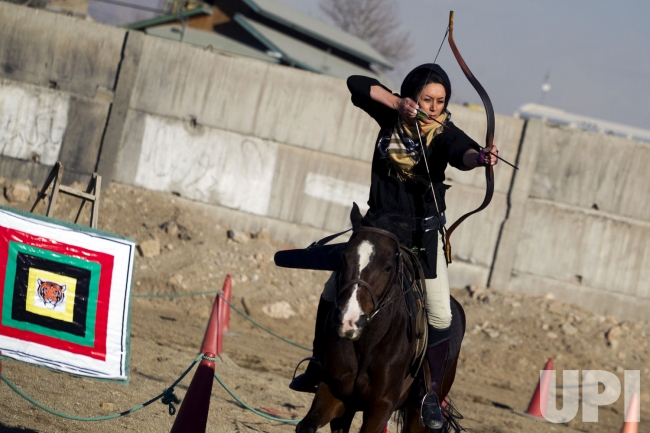
The Persian archer was the bread and butter of the military for many centuries. The early Achaemenids used foot archer to volley arrows en masse. Herodotus in his Histories records a witness to the battle of Thermopylae:
“Such was the number of barbarians, that when they shot forth their arrows the sun would be darkened by their magnitude”.
Modern Iranian Archery
The modern sport of archery has seen an influx of new interest and participants in recent decades. The nation is represented in the World Archery Federation. The Iranian Archery Federation has in fact been a member of the World Archery Federation since 1997. It is excited and pleasing to see a new generation of sportsmen and women enter the wonderful world of archery.
